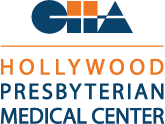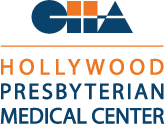To say the modern American healthcare system is the subject of disagreement and debate is an understatement. When contemplating this subject, many people focus on the partisan disagreements between lawmakers in Washington, D.C. However, maybe the biggest problem with U.S. healthcare lies in a single, simple truth: healthcare in the United States grows more expensive for Americans every year, and yet it is not more effective. This reality has a serious impact on the health of both the U.S. economy and its citizens.
At the same time, the disparity between quality and cost of treatment for those across the socio-economic spectrum is widening. This is causing large-scale discontent and fewer healthy people overall. Beyond the personal effect on patients, there is a lack of funding and government investment in healthcare. This puts the United States at increasing risk of falling behind other world powers in the research and development of new, innovative treatments, diagnostic tools and preventative measures for serious diseases.
The current picture of the American healthcare system appears grim. However, leaders from some of the most distinguished academic institutions in the U.S. believe they have an answer to this pressing issue: Convergence in Healthcare. This concept is detailed in the 2016 report "Convergence: The Future of Health." To fully understand how this revolutionary approach to the medical research sector could offer a solution to the U.S. healthcare problem, it’s important to have an in-depth understanding of both the current state of Americans’ health and the cost of care.
Healthcare costs growing at an unsustainable rate harms American businesses.
According to data presented by the Washington Post, U.S. per capita spending on healthcare 50 years ago was roughly equal to its peer countries such as Canada, Sweden, the United Kingdom, Switzerland and the average of the Office of Economic Co-operation and Development (OECD) member countries. Since the 1980s, however, the amount of spending per person has risen dramatically in the U.S. In 2016, total healthcare costs reached 17.9 percent of the GDP at $3.3 trillion.
Though exact statistics for 2017 have yet to be released, National Health Expenditure (NHE) data presented by the Centers for Medicare and Medicaid Services (CMS) suggest healthcare costs will soar to $5.7 trillion by 2026, growing at a rate of more than 5 percent every year between 2017 and 2026. Ultimately, the immense cost will rest on the American workers who need care as well as their employers, who shoulder much of the burden of these rising costs in the form of insurance premiums. Taken together, this has an exceedingly negative impact on the ability of businesses to pursue growth, which is crucial to the U.S. economy and the livelihoods of American workers.

Non-infectious chronic diseases on the rise.
Just as the cost of care at every level of the industry is rising, so too are instances of the chronic diseases that represent seven of the top 10 common causes of the death in the United States. According to the Centers for Disease Control and Prevention (CDC), cases of chronic and mental health diseases account for 86 percent of annual U.S. health expenditures.
The most recent data also indicate around half of all American adults have at least one chronic condition and approximately 25 percent have at least two. Some of the most widespread chronic conditions affecting U.S. adults include heart disease, diabetes, stroke and cancer, along with mental illnesses such as anxiety and depression. Additionally, as the world’s largest generation — the Baby Boomers — continue to age, rates of serious chronic illnesses primarily affecting elderly people (such as Alzheimer’s and Parkinson’s) are also increasing.
Unfortunately, the current state of medical research in the U.S. leaves society unprepared to meet the rising healthcare needs of Americans. Without significant innovation in areas of preventive care, early diagnostics and other methods of medical intervention, there is no foreseeable way to limit the number of these cases or reduce the costs associated with treating them.
Convergence is a workable answer to a complicated problem.
Luckily, Convergence in Healthcare is specifically designed to address prevention, diagnosis and treatment of health problems in the United States and around the world. By definition, Convergence in Healthcare is a model for medical research in which the expertise of professionals from the life science, physical science, engineering, computing and mathematics sectors is integrated and applied comprehensively to complex medical issues.
The belief among academics is such an approach would offer greater possibilities for innovation in human health. This is because science professionals with niche knowledge would be able to apply concepts from their own fields in a cooperative scientific environment to make unprecedented discoveries.
There is already evidence to show the value of Convergence in Healthcare as an approach, as evidenced by a number of exciting discoveries in areas such as imaging, nanotechnology, regenerative medicine and health IT. In addition, convergent approaches to the prevention, diagnosis and treatment of many chronic illnesses have shown promise in various ways.
For example, convergent research conducted at Massachusetts Institute of Technology (MIT) led to the use of chemical engineering to develop a vaccine strategy for certain cancers, including cervical and skin cancer. Chemical engineering concepts have also proven useful in the creation of 3D maps of the brain’s neural circuits. Medical researchers are using these maps to help identify brain cells as they relate to specific memories, which researchers hope to use as a method of memory recovery.
Other meaningful developments have occurred as a result of Convergence in Healthcare. These include research in to therapies for protection against Type 2 diabetes. Additionally, implantable sensors were developed to collect data on large numbers of patients. These devices use machine learning to identify predictable patterns for earlier diagnosis in the broader population.
Overall, Convergence in Healthcare is a simple, 21st century solution to problems that will not go away without intervention. It stands as the United States’ best chance at maintaining its role as a healthcare leader in the modern world.
 ENGLISH
ENGLISH  РУССКИЙ
РУССКИЙ 


